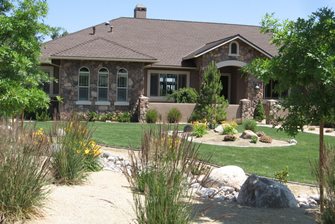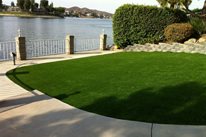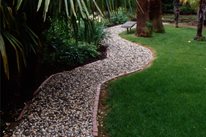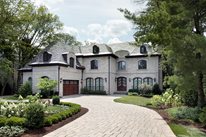How Much Does it Cost to Install a Drainage System?
Estimated prices for the four most popular methods for addressing landscape drainage problems
Every residential drainage project is unique because every homesite presents a different constellation of challenges. The way these problems are solved relates to the scale of the project, the kind of system proposed, preexisting site conditions, and all of these impact cost. It is far more affordable to install underground systems on a new homesite before the rest of the landscape is built and planted. Retrofitting a drain line or system to existing landscaping, particularly in a front yard, requires a great deal of damage due to excavation and piping. Costs below cover installation only and do not reflect additional labor and materials to repair lawns and planting areas in or around the trenched lines.
Relative cost of drainage system types
Surface swale: Estimate at $.50 per square foot.
These slightly depressed flow lines are created through grading. Surface may be lawn or cobbles to help slow velocity and filter debris.
French drain: Estimate $20.00 to $30.00 per linear foot.
Where water stands in a swale or elsewhere, a French drain can be installed beneath the flow line to provide a clean avenue for the water to percolate deeper underground so the surface soil can dry out.
Drop inlet sub-surface system: $8.00 to 10.00 per linear foot
Backyard landscapes often include a system of piping to gather water via strategically placed drop inlets or catch basins. The surface grades are all oriented to drain to the nearest drop inlet.
Trench drain: $70.00 per linear foot.
To drain the surface of a driveway, a trench drain is installed into the paving so there's a long surface grate that catches water sheeting down the pavement. Trench drains are set into concrete slabs or in between pavers and must be precisely leveled and the flow line carries water away.
Price influencersThe above unit costs for various drainage system designs are averages that may increase when certain conditions complicate installation.
- Demolition of existing conditions such as saw cutting a driveway to install a trench drain.
- Problem soil types such as caliche, hardpan and bedrock can increase excavation costs.
- Accessibility for existing homes can so limit equipment that materials must be moved by hand to a rear yard driving labor costs.
- Removal of excavated soils and other debris such as broken concrete can be costly in terms of equipment for hauling and disposal site costs.
- After installation of drainage systems within a pre-existing landscape, repair of plants and clean up can be minimal to extensive.
|
Contributing Author: Maureen Gilmer, contributing writer for Landscaping Network, author and syndicated columnist |




 Lawn Drainage Systems
Lawn Drainage Systems Backyard Drainage Solutions
Backyard Drainage Solutions Front Yard Cost
Front Yard Cost

